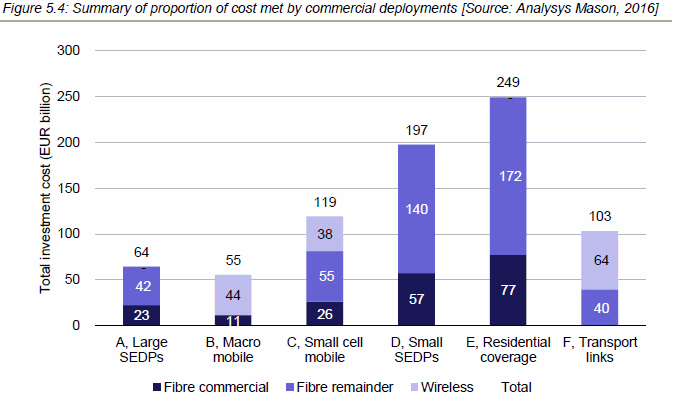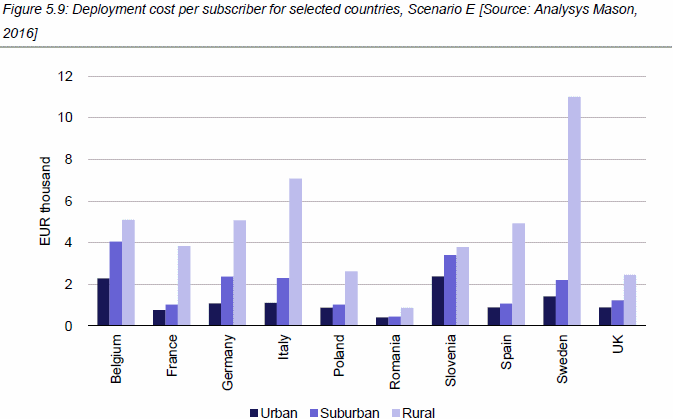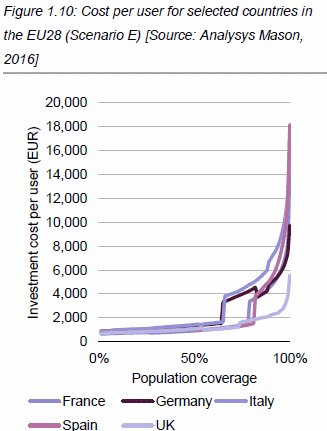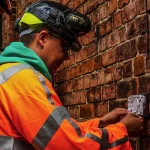Study – £224bn Needed to Cover All EU Homes with 1Gbps Broadband
The European Commission has published a new Analysys Mason study that examines the cost of, among other things, providing 1Gbps capable fixed line broadband connections to all residential areas across the 28 EU member states, which for now still includes the United Kingdom.
The research is designed to support the new “Gigabit Society” strategy, which was announced last month (here). This pledged a new target for “all European households” to get a minimum line speed of 100Mbps+ by 2025, with businesses and the public sector told to expect 1Gbps+. The strategy also included mention of a USO for broadband and support for future 5G mobile connectivity.
Advertisement
The total cost of achieving all of the targets in this admittedly “non-binding” strategy was estimated to require an investment of €500 billion (£450bn), most of which is rather optimistically predicted to “come from private sources” (note: the EC also expect a “€155 billion investment shortfall“).
Today’s report is thus designed to complement the EC’s new strategy by examining how much the necessary infrastructure might cost to deliver through various different scenarios, which include some useful country-specific figures. In particular it focuses a lot of energy on the aspiration of deploying 1Gbps (1000Mbps+) capable “wireline” (fixed line) broadband to all homes, such as via FTTP/H or Cable (DOCSIS 3.1) technologies.
Scenario E: Home fibre connectivity
Our fifth scenario considers the provision of 1Gbit/s wireline connectivity to residential premises. We assume that residential areas are fully covered by wireline infrastructure, though the ‘final drop’ (the connection between the secondary connection point and the end user) is only made when a customer takes service.
The weighted average take-up across the EU28 is forecast to be 81% by 2025. We model the cost of providing this coverage to 80%, 90% and 100% of population areas. Similar to other scenarios, fibre deployed for previous scenarios (e.g. Scenarios A, C and D) can be re-used.
In Scenario E a series of assumptions have been adopted about the standalone cost model. On average 81% of households are expected to take broadband and 100% of these will connect via a 1Gbit/s network by 2025, which includes some users connecting via cable networks (e.g. Virgin Media) and excludes the cost of final connections to SEDPs (e.g. businesses).
The basis of coverage in Scenario E targets full coverage of the access network, at least up to the final node before the home in each area that is covered (the study models 80%, 90% and 100% of areas being covered). The final connection to the home is made when a customer takes the service.
Advertisement
Overall the study predicts that €77bn of the total fibre cost for Scenario E could be met by commercial deployments, which would leave €172bn left to be tackled (total €249bn).

The study notes that the cost of delivering Scenario E with 80% coverage would unsurprisingly be lower at €123bn, while 90% pushes this to €170bn and as usual the cost of tackling the final 10% of mostly smaller or more difficult to reach areas produces a huge increase to hit the €249bn total. It’s further noted that the €249bn total could potentially come down by as much as €30-40bn if +10% more cable duct could be re-used than in the base case assumption.
According to Analysys Mason, the deployment cost per subscriber of delivering Scenario E would also be lower in the United Kingdom than a lot of other major EU states, particularly in rural areas. For example, the rural cost per subscriber in the UK is estimated to be around €2,200 and it’s interesting to note how much cheaper this is than most of the other countries.

As you’d expect the short line lengths vs higher population density in urban areas produce much lower costs to connect a subscriber than the long line lengths in rural areas. Regarding the differences between countries, these are driven by a number of factors, including local labour rates, the availability of duct infrastructure, the take-up of broadband and the market share of the modelled operator (e.g. vs. the market share held by the cable network operator).
Advertisement

Sadly we don’t get a detailed break-down of how the figures were arrived at (this would have been useful), which is largely true of the full report that acts more like a general overview than a detailed assessment of each country.
Otherwise the rural figure of around €2,200 for the UK converts to £1,981 at today’s exchange rate, although the GBP to EUR exchange has recently collapsed. Never the less it’s worth noting that at lot of the Government’s Phase 2 Broadband Delivery UK projects adopted a model of £1,700 per household (taxpayer subsidy) and that often reflects a much slower hybrid-fibre solution.
The report may thus seem to be underestimating the cost of pushing 1Gbps via fixed lines into rural areas, although you can see from Figure 1.10 on the right that the UK “investment cost per user” does shoot up for the final 5% and peaks at just below €6,000. Overall the total UK cost prediction does in fact point to a familiar figure of around €28bn (£25bn).
In the end the total of €249bn represents the most wide-scale EU deployment possible, which might not necessarily be what the EU ends up adopting. As usual there’s also plenty of room for adjustment in such forecasts, depending upon the approach taken and the levels of existing network coverage or ducts shared etc.
At the same time we must not forget that a lot of EU states are still struggling to meet the existing Digital Agenda targets, which aims to ensure that very home in the EU can access a 30Mbps+ capable superfast broadband connection (plus 50% subscribed to a 100Mbps+ service) by 2020. The UK at least looks likely to achieve this (EU Connectivity Report).
Mind you there’s a big question over the UK’s future in all this given Brexit, which could complete by around Spring 2019. The UK might simply choose to ignore the new targets and be less ambitious, but hopefully the Government will work to keep us competitive. However that would require a lot of new investment, which so far they’ve been reluctant to commit.
EC Study – Costing the new potential connectivity needs
http://bookshop.europa.eu/en/costing-the-new-potential-connectivity-needs/
Mark is a professional technology writer, IT consultant and computer engineer from Dorset (England), he also founded ISPreview in 1999 and enjoys analysing the latest telecoms and broadband developments. Find me on X (Twitter), Mastodon, Facebook, BlueSky, Threads.net and Linkedin.
« UK ISP TalkTalk Renews Premium TV Channels Deal with Sky

















































Comments are closed